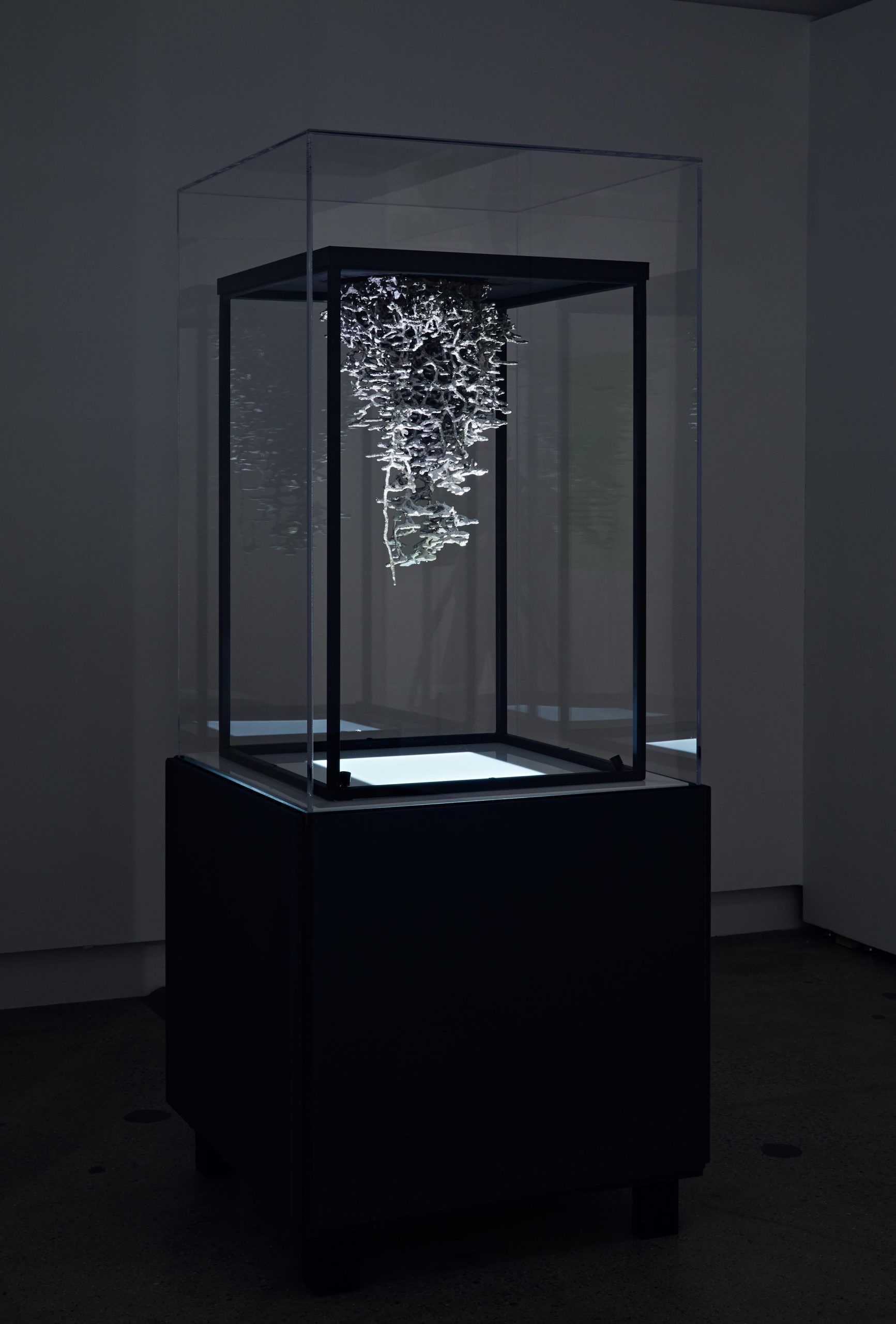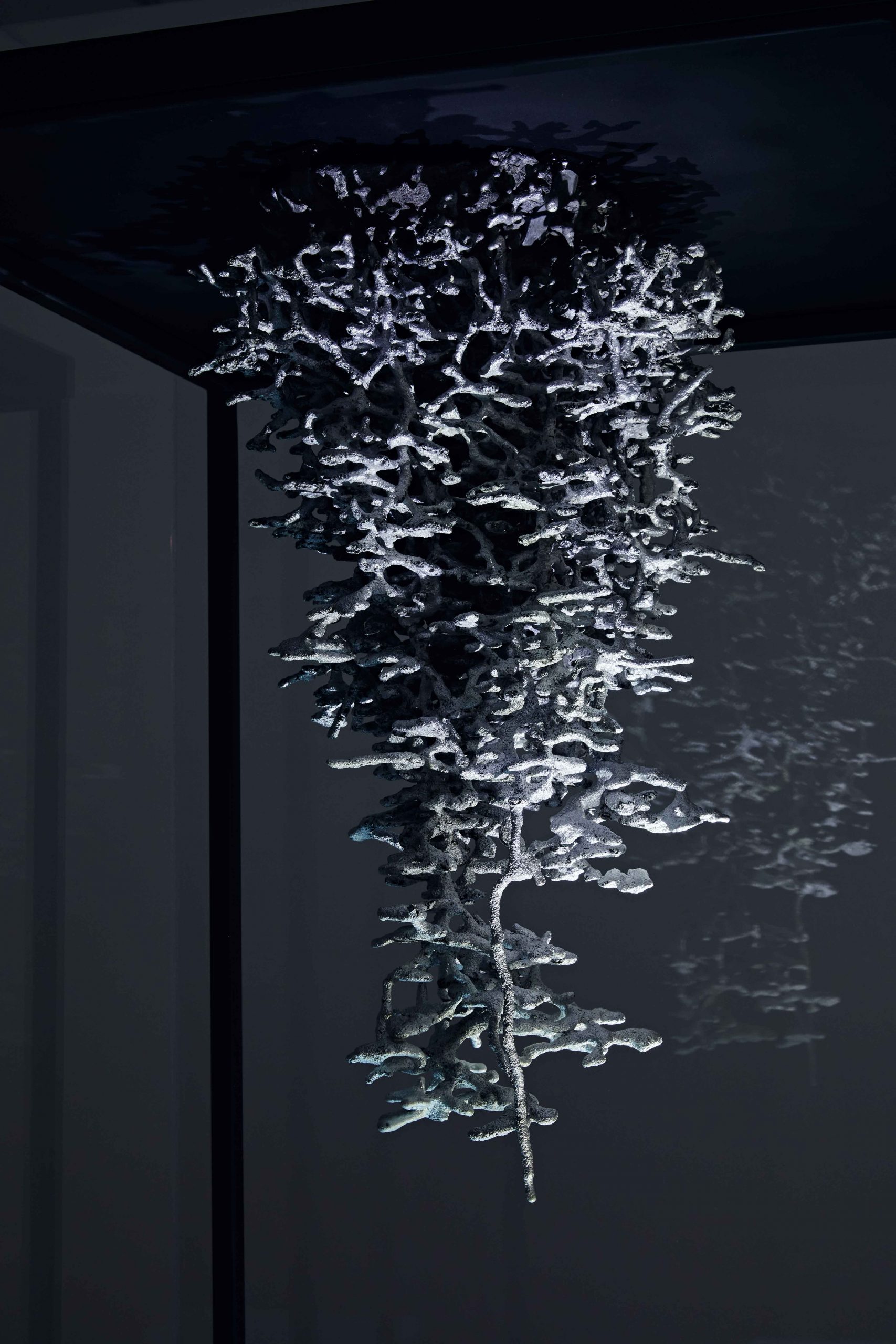Fire Ants’ Nest Cast, 2010
Aluminum
The term “architecture” typically brings to mind skyscrapers or cityscapes as markers of human ingenuity. However, many animals, including social insects, construct complex nest structures of characteristic form and function through a wholly decentralized process, often carried out in complete darkness through collective construction. Biologist Walter Tschinkel studies the rules that underlie the emergence of ant nest architectures, and how, in turn, those structures regulate the social behavior of the colony. To study these otherwise invisible structures, Tschinkel developed a number of novel techniques, including that of plaster and molten metal casting of recently abandoned nests. Tschinkel’s technique brought a new understanding to a fundamental aspect of the biology of these insects. This mapping of negative space brings a diverse range of species-specific forms to light, in this case, of the U.S. invasive fire ant, Solenopsis invicta.
Courtesy of the Division of Insects, Field Museum of Natural History.

